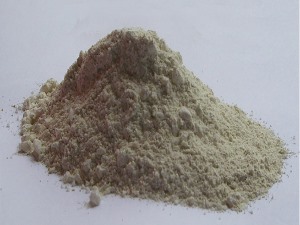Which methods can improve the temperature resistance of furnace lining
Luoyang all-pass furnace lining manufacturers teach you how to improve the temperature resistance of intermediate frequency furnace linings
1. Remove the mica paper when building the furnace.
2. Treat the crystal quartz sand for furnace construction.
3. Hand selection: mainly remove lumps and other impurities.
4. Magnetic separation: It is necessary to completely remove magnetic impurities.
5. Dry lining material: it is necessary to carry out slow drying treatment, the drying temperature is 200 degrees Celsius - 300 degrees Celsius, and the temperature is kept for more than 4 hours.
6. Selection of intermediate frequency electric furnace binder: use boric anhydride (B2O3) instead of boric acid (H3BO3) as binder, and the addition amount is 1.1%-1.5%.
7. Selection and ratio of furnace lining materials.
8. Selection of furnace lining materials: It should be noted that not all quartz sands with SiO2 greater than or equal to 99% can be used as lining materials for induction furnaces. The important thing is the size of quartz grains. (Such as crystal quartz sand SiO2 has high purity, white surface and transparent.) The larger the furnace capacity, the higher the requirements for crystal grains.
9. Proportion: The ratio of quartz sand for furnace lining: 6-8 mesh, 10 percent-15 percent, 10-20 mesh, 25 percent-30 percent, 20-40 mesh, 25 percent-30 percent, 270 mesh, 25 percent-30 percent.
10. Knotting of the furnace lining: The quality of the furnace lining is directly related to the quality of the sintering. When the lining is knotted, the particle size of the sand is evenly distributed without segregation. It is beneficial to improve the service life of the induction furnace lining.
11. Knotted furnace bottom: the thickness of the furnace bottom is about 280mm, and the sand is filled in 4 times. During manual knotting, the density is not uniform everywhere, and the furnace lining after baking and sintering is not fine. Therefore, it is necessary to strictly control the thickness of the material, and generally fill The thickness of sand is not more than 100mm\/time, the furnace wall is controlled within 60mm, multiple people operate in shifts, 4-6 people per shift, each time the knot is 30 minutes to replace people, rotate around the furnace slowly, and use even force to avoid causing Uneven density.
12. Knotting the furnace wall: the thickness of the furnace lining is 110-120mm, and the dry knotting material is added in batches, the cloth is uniform, the thickness of the filler is not more than 60 mm, and the knot is knotted for 15 minutes (manually knotted) until it is level with the upper edge of the induction coil. Qi. The crucible mold is not taken out after knotting, and the induction heating effect is obtained during drying and sintering.

Previous: The reason why ladle breathable bricks are widely used
下一条: What points should be paid attention to when using furnace lining
Related Industry Knowledge
- Features and Benefits of Coil Clay
- What are the advantages of a good furnace lining
- Misunderstandings in the use of ramming materials in intermediate frequency furnaces
- Phenomenon analysis of failure of argon blowing of ladle permeable bricks and how to improve the rate of argon blowing
- Where is the consumption reduction and energy saving of breathable bricks reflected?
- How to improve the service life of intermediate frequency furnace lining
- Reasons for damage to intermediate frequency furnace lining and how to solve them
- The performance and advantages of breathable brick
- Analysis of Structural Characteristics of Dispersive Breathable Bricks
- The intermediate frequency furnace charge knotting process needs to pay attention to details sharing
- The reason why ladle breathable bricks are widely used
- Furnace lining manufacturers take you to understand the process of the oven
- Features of diffused breathable bricks
- What are the methods of lining the intermediate frequency furnace charge?
- Correct selection tips for acid furnace lining materials
- How to correctly view the price of furnace lining
- What are the effects of smelting temperature on the composition of intermediate frequency furnace lining materials?
- The effect and principle of batching use of intermediate frequency furnace lining materials
- The conditions for the selection of intermediate frequency furnace lining materials
- Do you know these 5 aspects that affect the lining of the intermediate frequency furnace?


